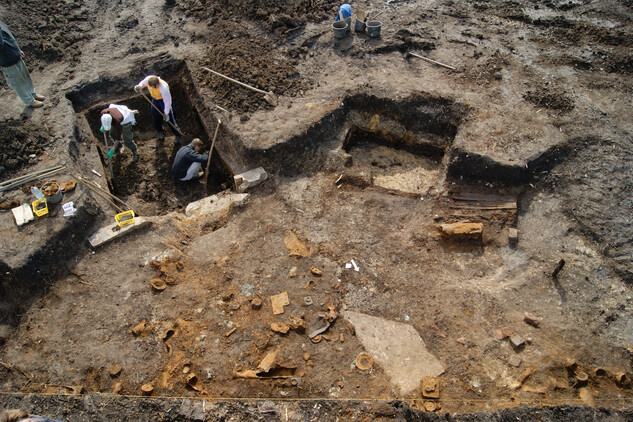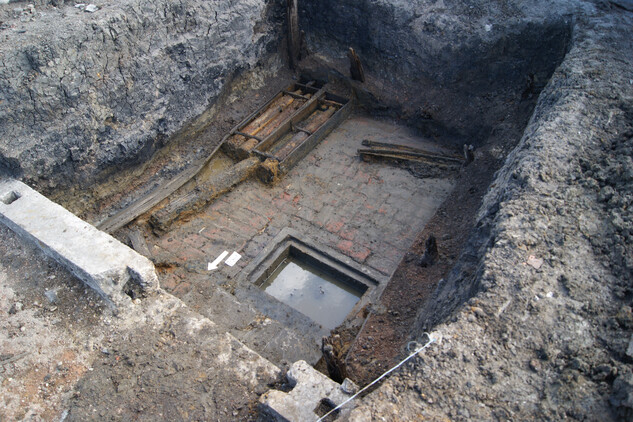Since 2012, the project called Strategic survey of the foreground of Bílina Mine is conducted in the area of about 6 km2. The existence of the cemetery and the church from the late 12th or early 13th century was known due to former archaeological events, but the detected size of the medieval graveyard, with no less than 2,000 graves, is enormous. Due to new findings, especially typical Slavic jewelry and coins, it’s apparent that the cemetery was used from the 11th till the 13th century. It therefore seems that in the early medieval era it was sort of central graveyard for the residents of all nearby settlements for three hundred years. It’s a purely exceptional phenomenon in Bohemia of that era.
As part of the sub-project “Archaeology and World War 2 in the Most region”, an archaeological survey was conducted only several hundred meters away from the medieval cemetery, looking into the positions of German anti-aircraft artillery during WW2. The air photos from 1953 and the geophysical survey indicated that there were two positions on the fields between the former road Braňany – Jenišův Újezd and former Libkovice airport. Between 1939 and 1942, the Nazis built a factory producing synthetic fuels in Záluží u Mostu, and they set a perimeter of heavy anti-aircraft artillery around the factory. A lot of war debris remained in the area, including unexploded ammunition, which required cleaning up. Therefore, the archaeologists joined efforts with experts from the Military History Institute, and, in case of active ammunition, also with police pyrotechnicians. Due to the research, it was possible to reconstruct the position of cannons – an anti-aircraft cannon was standing in the center on the octagonal reinforced concrete pedestal, the main ammo storage was part of the facility, and access to power was always provided. The building was built of wood, with a flat plank roof; the walls of the ammo storage were bricked. Due to the archaeologic survey, the function of circular objects on the old aerial photographs taken in 1953 was discovered; though they were considered bomb craters at first, it was proven they were artificially made pits to dispose of ammo after the war.
Both archaeological activities in the polycultural location of Nesvětice are unique in their own ways. The early medieval cemetery is extraordinary for the sheer number of burials, unparalleled in the Czech Republic. The second case involves the largest archaeological survey related to WW2 not only in Czechia but all over Europe.
Nominated for the Ústecký Region by the regional center of the National Heritage Institute in Ústí nad Labem.
The Institute of Archaeology, Czech Academy of Sciences, represented by Petr Čech (Head of Survey), was nominated for the National Heritage Institute Prize, category: Discovery / Finding of the Year.





